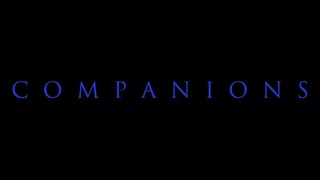“THE STORY OF NAVAL AVIATION“ 1961 U.S. NAVY PROMO FILM USS ENTERPRISE AIRCRAFT CARRIER 46364
Dating to 1961, this U.S. Navy film celebrates fifty years of naval aviation (:10). It opens with footage of supersonic aircraft (:28) and the aircraft carrier USS Enterprise (:42). Footage of the Wright Brothers’ first flight on December 17th, 1903 near Kitty Hawk follows (1:25). Captain Washington Irving Chambers (1:31) was to observe and report on aviation developments of Navy concern. In November of 1910, Eugene Ely flew his Curtiss aircraft (1:41) off the deck of the cruiser USS Birmingham. A photograph follows of another demonstration to land on the USS Pennsylvania (1:51). The Navy was allocated $25K for it’s first land plane and two seaplanes (2:07). One of those seaplanes is seen (2:12) along with Lieutenant Theodore G. Ellyson whom had been trained by Glen Curtiss (2:12). In 1911, the Navy began training pilots at Annapolis, Maryland (2:23). An early trainee, Alfred A. Cunningham is seen at (2:32). Catapult experiments began in 1912 (2:37). In 1914, Admiral Patrick Bellinger (2:53) flew the first plane to be damaged in combat in Veracruz, Mexico. As WWI broke out (3:06), Navy aviation put it’s new developments to the test. The war effort produced nearly 3,000 aircrafts from Curtiss, Martin, Boeing and others (3:11). A German U-boat (3:26). Lt. Kenneth Whiting was a part of the first U.S. group to reach Europe (3:32). Aircraft take off for anti-submarine patrols to raid submarine pens in the North Sea (3:43). The Davis recoilless rifle (3:49). Commander John Towers (4:12) sent three NC patrol planes in May of 1919 from New York to Portugal for a trans-Atlantic flight (4:16). Only one of the NC patrol planes made it all the way and was piloted by Commander Albert Reid (4:40). Rear Admiral William Moffett (5:02) was the first Chief of the Bureau of Aeronautics. Warships rigged to launch aircraft (5:13). Catapult systems enabled cruisers and battleships to carry scout planes (5:34). As they expanded towards aircraft carriers, ground tests were conducted to stop planes as they landed (6:07). Arresting gear was installed on the first Navy carrier, USS Langley, in 1922 (6:20). Lt. Godfrey Chevalier made the Navy’s first carrier landing (6:26) in a Vought VE-7 (6:35). The Helldiver follows (8:01). The Washington Naval conference took place in DC from 1921 to 1922 (8:48). The Secretary of Navy, Charles Evans Hughes demonstrates take offs and landings on a scale model (8:56). The USS Saratoga and USS Lexington are built (9:01). Commander John Rogers, along with his crew, in 1925 left San Francisco for Hawaii (9:37). They flew the PN-9 flying boat and set a distance record of 1,800 miles (9:49). After being forced to land at sea, the men fashioned a sail from one of the plane’s wings (10:05) and sailed the remaining 450 miles to Hawaii. The Norden bombsight became the standard sight to be used for horizontal bombers (10:37). Retractable landing gear was installed (10:52) and monoplanes replaced biplanes (11:04). As Japan attacked Pearl Harbor on December 7th, 1941 (11:40) all the aircraft carriers were at sea. Raids against Japanese possessions (12:24). In May of 1942, U.S. forces halted the Japanese in the Coral Sea (12:34). Battle of Midway in June of 1942 follows (12:52). The Navy is seen in combat with German U-boats during the Battle of the Atlantic (13:09). Search planes sought U-boats in the Caribbean (13:57). Blimps were used as convoy escorts (14:10). Escort carriers joined the fleet in 1943 (14:21). The Grumman F6F Hellcat is shown (15:07) as well as the Grumman TBF Avenger (15:16). 400 planes were struck down during the Battle of the Philippine Sea in 1944 (16:38). Japanese Kamikazes attack the fleet (17:11). Nuclear weapons were introduced at the end of the war in 1945 (18:11). The U.S. Army Air Force B-29 Superfortress (18:33) is shown. Post WWII era, the P2V Neptune (19:48) made a record breaking non stop 11,000-mile flight from Australia to Columbus, Ohio. The first Navy jet planes are readied for use on carriers including the McDonnell F2H Banshee (20:31) and the Grumman F9F Panther (20:36). The USS Forrestal is seen being christened (22:19). The Vought F-8 Crusader (26:13) and the McDonnell Douglas F4H Phantom (26:13) had Sidewinder and Sparrow 3 missiles installed in them. The Douglas A4 Skyhawk (26:38) is seen. The USS Enterprise, the largest ship in the fleet as well as the first nuclear powered aircraft carrier (27:16), is shown. Produced by Naval Photographic Center (27:35).
This film is part of the Periscope Film LLC archive, one of the largest historic military, transportation, and aviation stock footage collections in the USA. Entirely film backed, this material is available for licensing in 24p HD, 2k and 4k. For more information visit











![[COVER STORY] 연준 (YEONJUN) X 몽클레르 (MONCLER)](https://sun9-45.userapi.com/s0TLufg3n9E_CMyqQ1eP5bwDYPrzSBbT8XGPTw/KcaYNesvnXg.jpg)




![[4k60] 2025 New Release | LISE CHARMEL lingerie in SLOW MOTION part.1 | Salon International Lingerie](https://sun9-2.userapi.com/eGnSzlhNxqKUh-qLzTL9Ws_zlOYq710eJLZNPg/8SaSGATjv7g.jpg)






